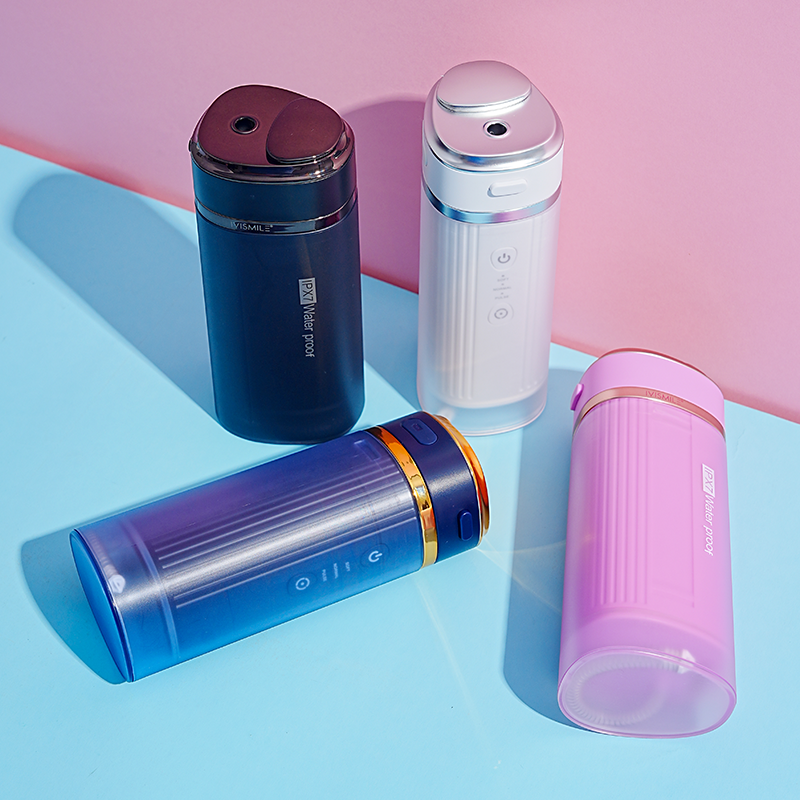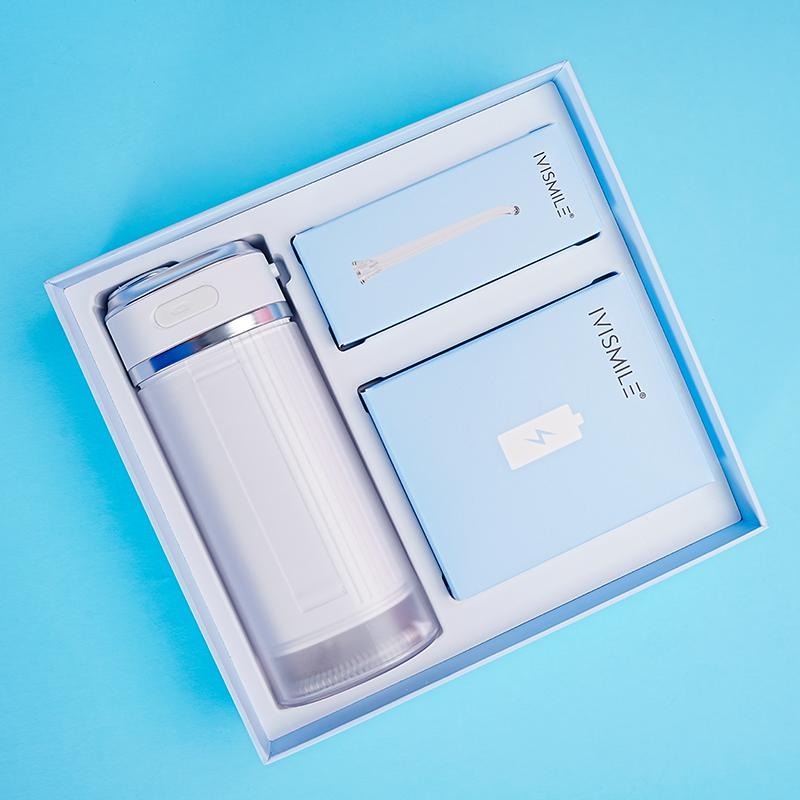Oghere mmiri mmiri bụ ngwá ọrụ sayensị egosila na ọ na-edobe ịdị ọcha ọnụ dị elu nke ọma, na-ewepụ ihe ncheta na nje bacteria na mpaghara ndị ịhịa aka n'ahụ ọdịnala nwere ike na-atụfu. Dị ka American Dental Association (ADA) si kwuo, floss mmiri nwere ike ibelata gingivitis na mbufụt chịngọm mgbe ejiri ya mee ihe nke ọma. Agbanyeghị, mperi ndị ọrụ nkịtị nwere ike ibelata arụmọrụ ha. N'ebe a, anyị na-akọwapụta mmejọ ndị na-emekarị ma na-enye nghọta ọkachamara iji nyere gị aka ịbawanye uru nke flosser mmiri na-enweghị eriri.

1. Iji Ntọala nrụgide mmiri na-ezighi ezi
Otu n'ime mmejọ a na-emekarị bụ ime ka nrụgide mmiri dị elu ma ọ bụ dị ala. Nnyocha e bipụtara na Journal of Clinical Periodontology na-egosi na nrụgide dị ukwuu nwere ike imebi anụ ahụ chịngọm, ebe nrụgide na-ezughị ezu anaghị ewepụ ihe ncheta nke ọma. Ọ bụ ihe amamihe dị na ya ịmalite site na nhazi usoro ma jiri nwayọọ nwayọọ gbanwee. IVISMILE IPX7 mmiri anaghị ekpuchi mmiri na-enye ọtụtụ ọkwa nrụgide ahaziri maka chịngọm nwere mmetụta na nhicha miri emi.
2. Ndokwa Nozzle na-ezighi ezi
Angling kwesịrị ekwesị dị oke mkpa iji nweta nsonaazụ kacha mma. Nnyocha sitere na The International Journal of Dental Hygiene na-atụ aro na iduzi jet mmiri ozugbo na chịngọm nwere ike ịkpasu iwe kama ịsachapụ nke ọma. Kama, dobe nozzle n'ogo 45 ogo n'ahịrị chịngọm, dị ka ndị ọkachamara n'ihe gbasara eze na-atụ aro ya, iji kwatuo ihe ncheta nke ọma n'emeghị ka ahụ erughị ala.
3. Ileghara ebe siri ike iru
Ọtụtụ ndị ọrụ na-elekwasị anya na ezé ihu dị mfe ịnweta ebe ha na-eleghara mole na oghere interdental anya, ebe mkpokọta plaque kacha elu. Nnyocha ụlọ ọgwụ na-egosi na floss mmiri na-ewepụ 29% ihe ncheta karịa ezé azụ ma e jiri ya tụnyere eriri eriri ọdịnala. Mgbe ị na-eji flosa mmiri ọkụ eletrik, hụ na a na-eme usoro n'usoro na-ekpuchi akụkụ anọ nke ọnụ, ọkachasị gburugburu ngwaọrụ orthodontic, ihe ntinye, na akwa eze.
4. Iji mgbata mmiri kama ọgwụgwọ ọkụ ma ọ bụ ọgwụ nje
Mmiri mgbata oyi nwere ike ghara iru ala maka ndị nwere ezé nwere mmetụta. Ndị ọkachamara n'ihe gbasara ahụike na-atụ aro ka iji mmiri dị ṅara ṅara mee ka nkasi obi dịkwuo mma. Maka uru antibacterial agbakwunyere, ngwakọta nke mmiri na chlorhexidine mouthwash ma ọ bụ nchacha hydrogen peroxide nwere ike inye aka belata ibu nje ma gbochie ọrịa. IVISMILE flossar mmiri nwere ike ịchaji dakọtara na ncha ọnụ ọnụ dị mma, na-ahụ maka ahụike chịngọm.
5. Aghara ịsụ ahịhịa maka oge a tụrụ aro
Ịgba ọsọ site na oge ịsa mmiri na-ebelata irè ya. Otu American Dental Association (ADA) na-atụ aro ka a na-ete ahịhịa opekata mpe 60 sekọnd maka iwepụ ihe ncheta kacha mma. Nnyocha e mere na Journal of Clinical Dentistry chọpụtara na iji flosser mmiri a na-ebugharị ebugharị maka oge akwadoro mere ka mwepụta 53% karịa nke obere oge. Onye na-agba mmiri ọnụ nke IVISMILE na-agụnye ihe ngụ oge akpaaka iji kwalite àgwà nhicha nke ọma.
6. Ileghara Nlekọta anya na Nchacha nke ọma
Edaghị ihicha eriri afọ gị na-enweghị eriri na-eduga n'ịkwalite nje bacteria, na-emetụta ma ịdị ọcha yana ogologo ndụ ngwaọrụ. Dị ka otu nnyocha nke erslọ Ọrụ Maka Nchịkwa na Mgbochi Ọrịa (CDC) si kwuo, ngwa ndị e ji ọnụ ọnụ nwere ike iburu biofilm ma ọ bụrụ na anaghị ebute ọrịa mgbe niile. Iji gbochie mmetọ, kpochaa tank mmiri na nozulu mgbe ejiri ya ọ bụla ma mee ihe dị ọcha kwa izu na mmiri mmiri na mmanya ọcha.
7. Ịdabere na Flosser Mmiri naanị
Ifuru mmiri bụ ihe mgbakwunye magburu onwe ya na nlekọta ọnụ mana ọ ga-emeju, ọ bụghị dochie ya, na-eji brọsh igwe eletrik na-asachapụ. Nchikota nke igwe na hydrokinetic ihicha na-enye nsonaazụ kacha mma. Nnwale ụlọọgwụ na-egosi na ndị ọrụ jikọtara brọsh eze sonic nke IVISMILE na flosser mmiri nwere ike ịchaji nwere mbelata 70% dị ukwuu na plaque na mbufụt chịngọm karịa ndị na-eji naanị ya.

Mmechi: Jiri IVISMILE welie ịdị ọcha ọnụ gị
Izere mmejọ ndị a a na-ahụkarị na-achọpụta na arụmọrụ kachasị mma sitere na flosser mmiri IVISMILE gị. Site na ịrapagidesi ike na ndụmọdụ ndị ọkachamara na itinye eriri mmiri USB nwere ike ịchaji n'ime usoro nlekọta eze zuru oke, ị nwere ike nweta ahụike chịngọm ka mma na ịmụmụ ọnụ ọchị.
Chọgharịa IVISMILE dị iche iche nke floss mmiri na-ere n'ùkwù na ndị na-agba mmiri OEM iji weta nlekọta eze dị oke n'ime ihe omume gị kwa ụbọchị.
Oge nzipu: Feb-06-2025





